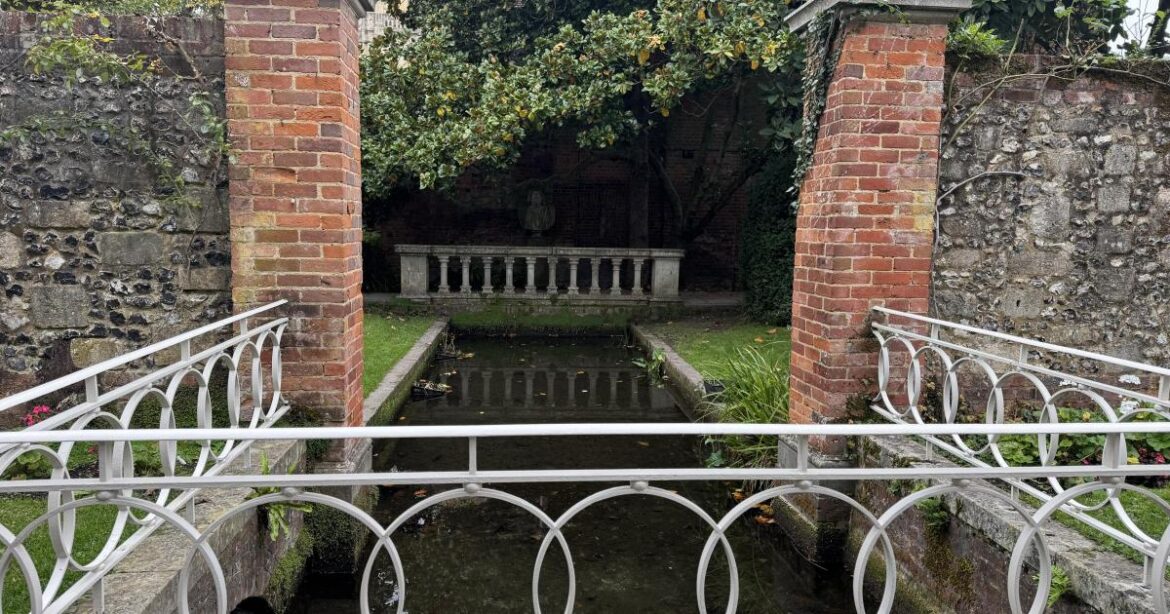The garden, in Colebrook Street, has been worked on since summer by Winchester resident, John Airey, who dedicated hours to revitalising the space.
The garden, originally envisaged by the late Peter Smithers, a former Winchester MP, had faced an uncertain future, however, with Mr Airey’s dedication it now closely resembles the original vision.
Mr Airey, 70, from Kings Worthy, said: “What I wanted was a legacy and I was looking for something in Winchester that could be protected and not built on. I wanted to do the garden as a theme of remembrance for Jane Austen and the fallen soldiers.
“Ultimately, I just wanted the public to be able to go in there and we were days away from exchange before we discovered the covenant- which halted any plans.
Mr Airey working on the Water Garden in Colebrook Street (Image: Newsquest)
“I love the place, so does everyone in Winchester and it needs to be enjoyed! At the beginning of summer I started the work and spent about 200 hours in there. I think I cleaned out about 50 years worth of silt.”
Mr Airey does not own the garden, however takes pride in its upkeep and continues to fight to be able to make it a space for the public to enjoy, which includes the pruning of the magnolia tree, currently blocking the reflection of the Cathedral on the pond, but unable to be touched.
A 60 year old covenant is in place for the area, restricting the use of the garden to the public. Mr Airey fought to reverse this by applying to council for an amendment, but was unsuccessful.
Mr Smithers, former Winchester MP from 1950 to 1964, created the water garden as a way to attract tourists, as the pool perfectly reflects the Cathedral. The garden also has a classical statue underneath a magnolia tree and is located about 50 yards from the west end of the cathedral.
Mr Smithers served in the Second World War war with author Ian Fleming, giving rise to suggestions that the character of James Bond may have been partly based on him.
In 2020, the land went through uncertainty as former Hampshire UKIP leader, Alan Stone, proposed to develop a house on part of it. That sparked heavy criticism from residents, conservationists and historians. His application attracted more than 1,000 objections and was rejected by planners.


Comments are closed.